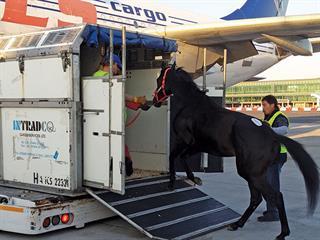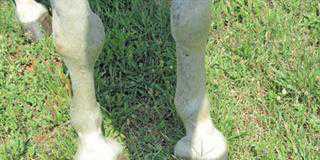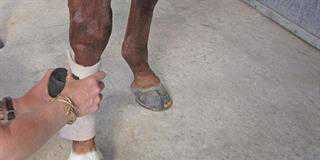
The 1960s were the heyday for importing horses to South Africa. The maize price was high and the cost of imports could be set off against tax. Maize barons had plenty of spare cash and the horses brought in could be fed maize stover.
The Arabian, Thoroughbred and American Saddler lines were imported then – and today form the backbone of our equine industry. Currently, however, due to our smaller horse population, South Africa does not have enough competition horses of a sufficiently high standard, and imports are necessary. But the expense of importing is escalating as the exchange rate widens, and the process is today more complex than it was 50 years ago. Advanced planning is essential and it is impossible to do it yourself – you will need a professional import company to make all the arrangements.
Quarantine and vaccines
At least 30 days before going into quarantine in the exporting country, the horse has to undergo a number of tests and be vaccinated. In the US, this includes vaccines against equine encephalitis and equine influenza, as well as testing for equine infectious anaemia (EIA), dourine, equine viral arteritis (EVA) and contagious equine metritis (CEM).
As a buyer, you have to find out whether the horse you intend purchasing comes from an area free of these diseases. EIA is almost endemic in certain US states, while some countries in Europe have a high level of CEM and EVA. Sellers often plead ignorance about outbreaks and there is little information on the internet (except at the OIE World Animal Health information database – www.oie.int). Few local vets are up to date on equine diseases. The specialised importers are the only source of reliable information in this respect.
Your risk as a buyer is that you may have to pay for the horse before it undergoes all the tests, and recovering the money from the seller may prove almost impossible. An additional complicating factor is that the normal in-flight horse carrier accommodates three horses. You will therefore need to find two companions for the horse you intend bringing in, or you will pay three airfares instead of one.
There are direct flights from the US to South Africa, but as more horses are imported from Europe, it may be better to fly via Europe to ensure that the horse carrier is fully occupied. At the time of writing, it costs R200 000 to bring in a horse from the US. This is a fairly conservative estimate, though, based on three horses per crate and excluding unexpected extras such as transport from the stable of origin to the airport of embarkation.
Once in South Africa, the horse must be quarantined for a further 30 days, retested, and vaccinated against African horse sickness (AHS). Most horses are imported between June and October to avoid AHS.
Insurance
The horse being imported must be insured, not only for the trip, but for the period after arrival, as it will be highly susceptible to new parasites and the diseases they carry. Injuries are another possibility as the horse will be in an unfamiliar situation, being loaded and unloaded in a bustling airport.
This needs to be considered before buying a competition horse. Horses that have been extensively shown and travelled are a better proposition than a young horse that has never been off the farm where it was born.













